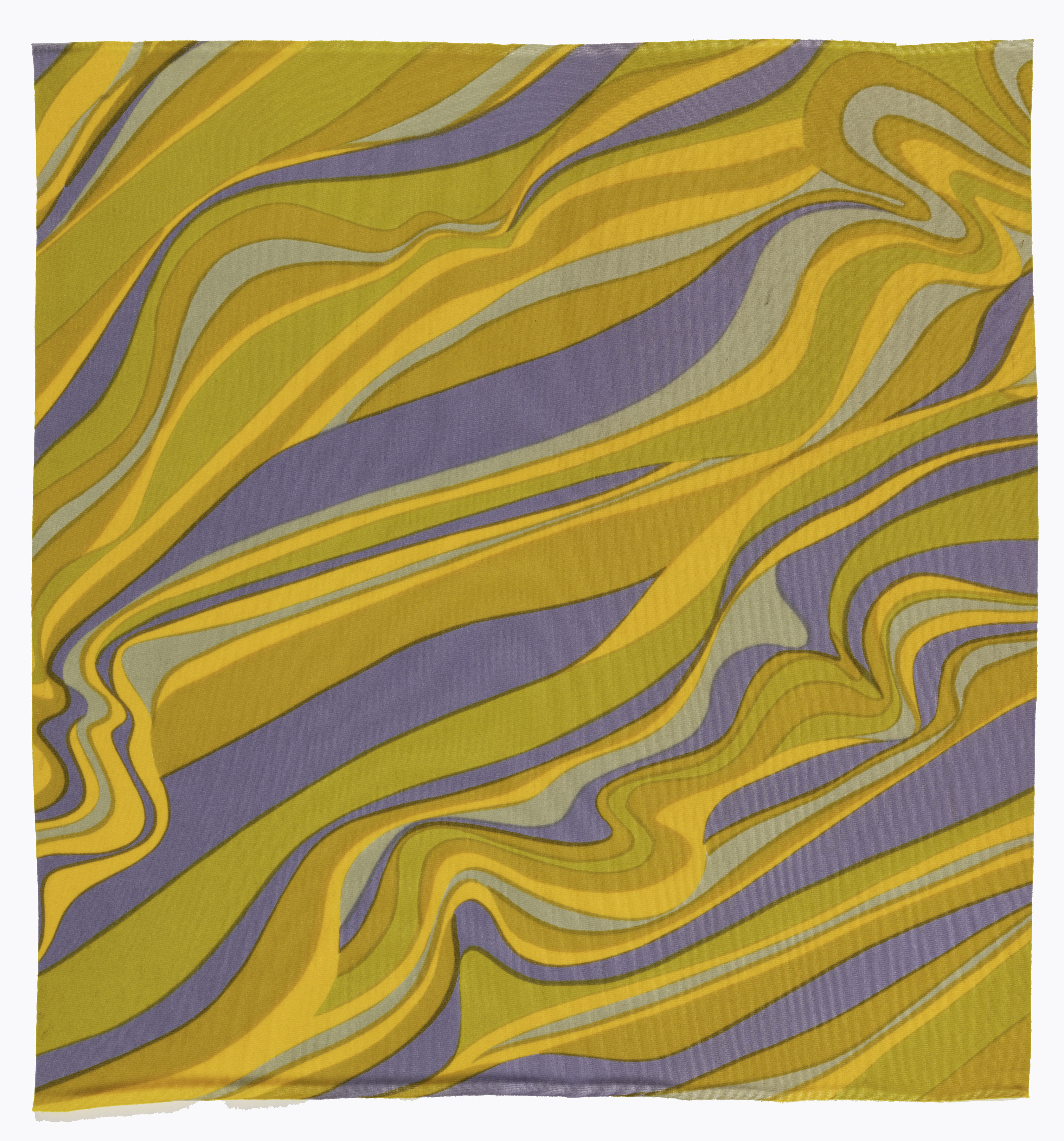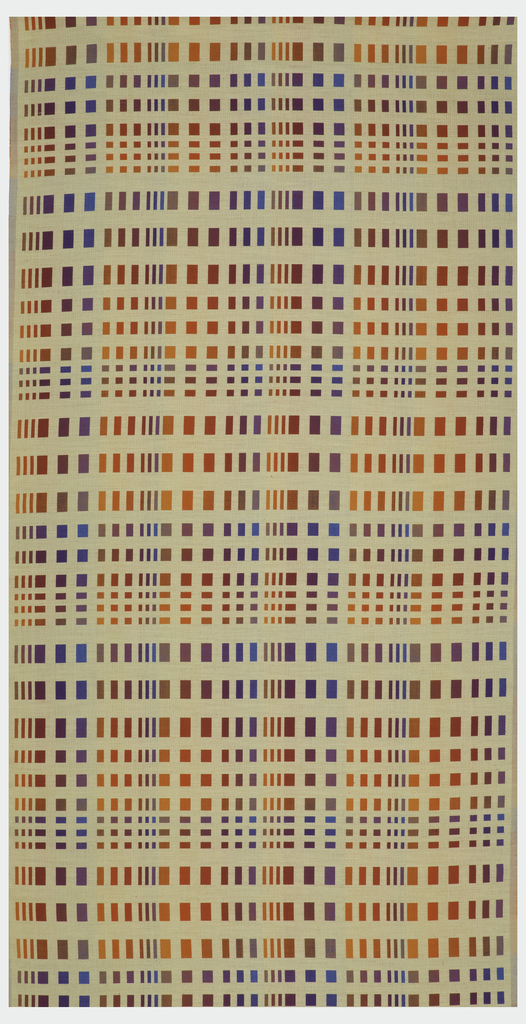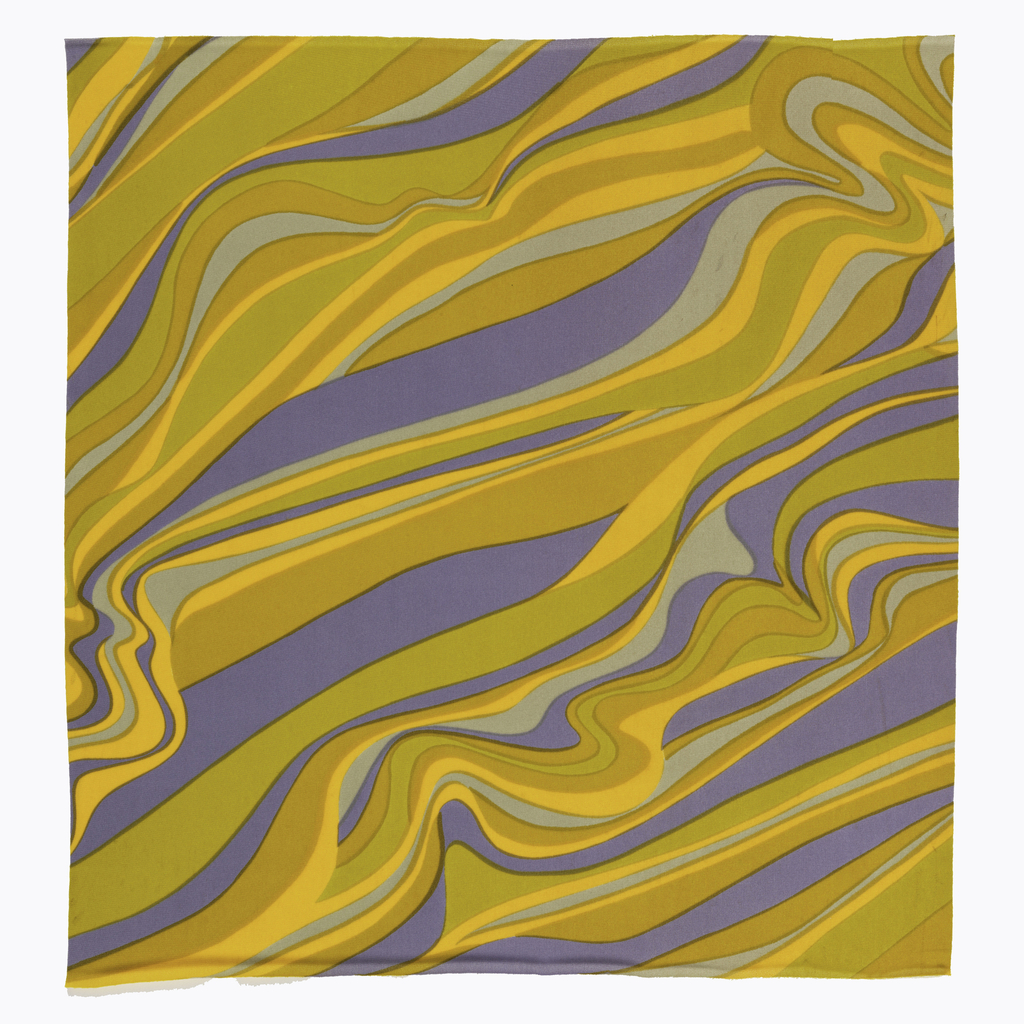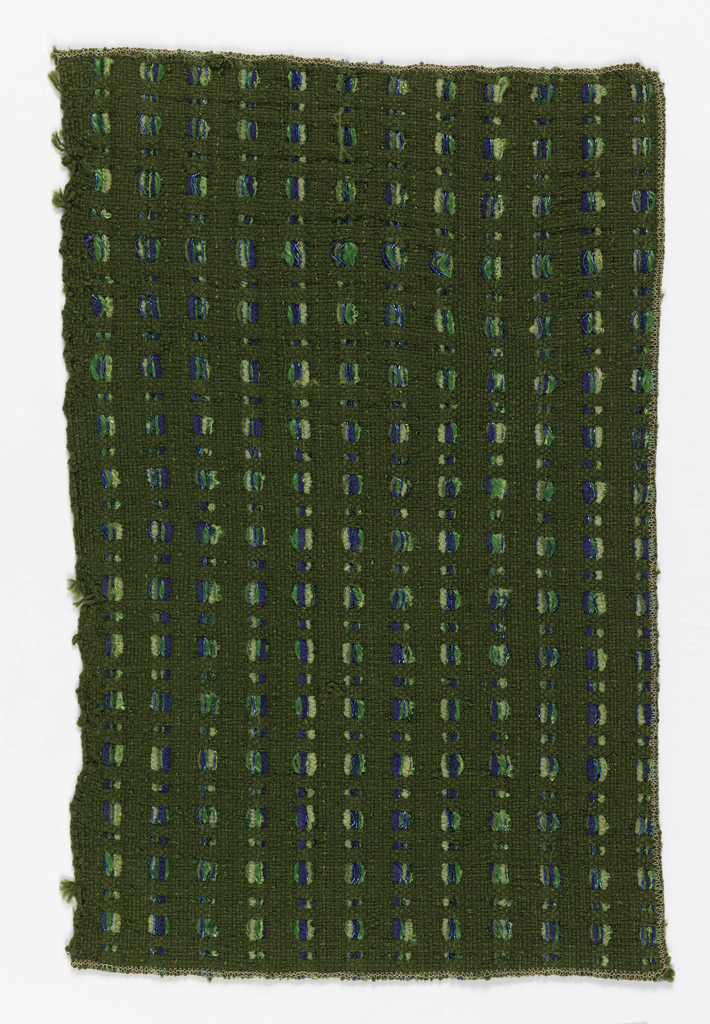Jack Lenor Larsen, one of the most influential textile designers of the 20th century, is noted for his pioneering use of innovative methods and materials. Bojangles, designed for the 1967 collection The Butterflies, is made from Caprolan stretch nylon designed to conform to the rounded, organic shapes of 1960’s furniture. Larsen believed that pattern should...
From the Object of the Day archives, Landis II (1973) designed by Richard Landis in collaboration with Jack Lenor Larsen and now in the museum's permanent collection.
In addition to studying traditional textiles around the world, Jack Lenor Larsen firmly believed in investing in the future, and in devoting resources to developing new textile technologies. He frequently use-tested his latest fabrics in his own home. “Every year at my Gramercy Park apartment I redesigned the interior as a means of experimenting with...
We’re celebrating the lead-up to the National Design Awards gala with a week-long tribute to Jack Lenor Larsen, winner of this year’s Director’s Award. Using objects from the museum’s collection, we will highlight some of Larsen’s many roles in the design community: master weaver, textile designer, entrepreneur, collector, scholar, author, and advocate for the world’s...



